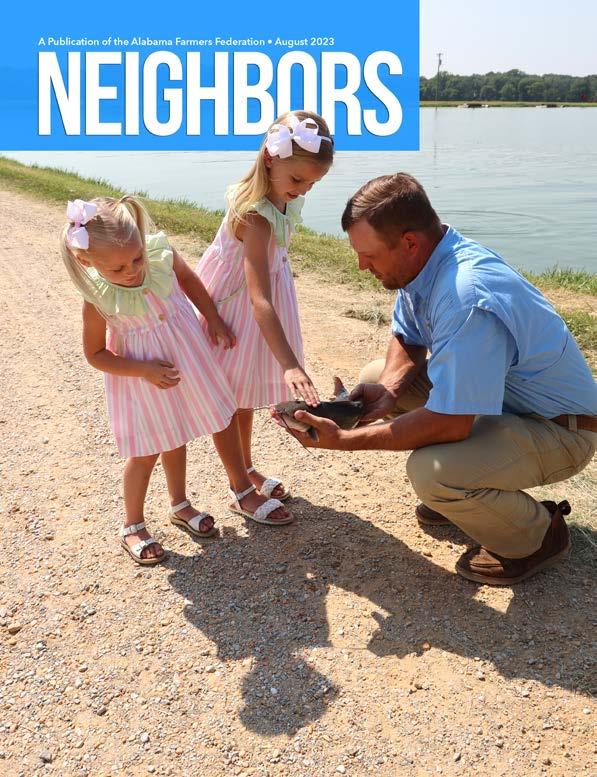
Meet Outstanding Young Farm Family Finalists Easy Weeknight RECIPES CELEBRATE NATIONAL CATFISH MONTH

August 2023 | Volume 48 | Number 7
Marlee Jackson | Editor
Laura Unger | Graphic Designer
ALABAMA FARMERS FEDERATION

Paul Pinyan Executive Director
Jeff Helms | Director of Communications
FEDERATION OFFICERS
Jimmy Parnell | President, Stanton
Rex Vaughn | Vice President | North, Huntsville
Jon Hegeman Vice President | Central, Anniston
George Jeffcoat Vice President | Southeast, Gordon
Jake Harper | Vice President | Southwest, Camden
Steve Dunn Secretary-Treasurer, Evergreen
DIRECTORS
Dorman Grace | Jasper
Jeff Peek | Athens
John Bert East Leesburg
Steve Lake | Vinemont
Joe Anders Northport
Phillip Hunter | Birmingham
Joe Lambrecht | Wetumpka
Tommy Martin | Moundville
Bill Cook Montgomery
Trip Horne | Louisville
Mark Kaiser | Daphne
Thomas Adams Newville
Ann Whatley | Opelika
Jonathan Edgar Wetumpka
Neighbors (ISSN 0162-3974) is published monthly by the Alabama Farmers Federation, 2108 East South Boulevard, Montgomery, Alabama 36116 or (334) 288-3900. For information about Alabama Farmers Federation member benefits, visit the website www.alfafarmers.org. Periodicals postage paid at Montgomery, Alabama, and additional mailing offices.

Printed in the U.S.A.
POSTMASTER
Send address changes to Neighbors

P.O. Box 11000, Montgomery, Alabama 36191-0001
MEMBERSHIP AND SUBSCRIPTION CHANGES 800-392-5705, Option 4 or BWatkins@alfafarmers.org
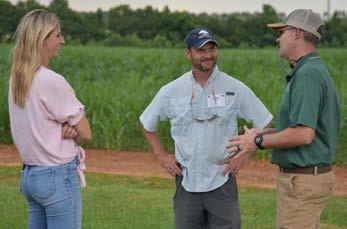
ADVERTISING REPRESENTATIVE
Ben Shurett, (256) 997-7922 BenShurett.alfafarmers@gmail.com
DISCLAIMERS: Advertisements in Neighbors do not represent an endorsement by the magazine or Alabama Farmers Federation. Editorial information from sources outside the Alabama Farmers Federation is sometimes presented for our members. Such material may, or may not, coincide with official Alabama Farmers Federation policies. Publication of information does not imply an endorsement by the Alabama Farmers Federation.

A member of American Farm Bureau Federation
www.AlfaFarmers.org EDQM 14 In This Issue
| Young Farm Families Compete for Top Title
| New Class Announced for A.L.F.A. Leaders Program
| Soy Fuels Alabama-Made Renewable Diesel
| Green Industry Tour Grows Relationships
| Solon Dixon Center Offers Unique Forestry Education 16 On The Cover Wallace Drury and daughters Kennedy and Rowen are gearing up to celebrate National Catfish Month. Drury, who farms in Greensboro, is Alabama’s Catfish Farmer of the Year.
4
11
12
14
19
| Sweet Tips to Attract Hummingbirds 27 12 alfafarmers.org August 2023 | NEIGHBORS | 3
Photo By Maggie Edwards 27
Young Farm Families Vie for Top Title
By Marlee Jackson

The three couples vying to be Alabama’s Outstanding Young Farm Family (OYFF) have diverse farms and backgrounds but share a critical common denominator — faith.
That faith, coupled with hard work, is a key component of their success, said Alabama Farmers Federation Young Farmers Division Director Hunter McBrayer. The Federation coordinates the annual contest, where Young Farmers 18-35 vie for nearly $80,000 in prizes.

“Competing in the OYFF is an incredible opportunity for farmers to track growth from their first year farming to now and make plans for the future,” McBrayer said. “Making the finals is a testament to the years of hard work and sacrifice these farm families put into their businesses. We’re proud of all three finalist couples and are excited to honor them this August at the Farm & Land Expo in Mobile.”
OYFF finalists are Mitchell and Rebecca Henry, Lawrence
County; Brady and Anna Peek, Limestone County; and Whit and Amanda Lovelady, Talladega County.
The OYFF competition recognizes farmers for excellence on the farm, in their communities and within the Federation. More than 50% of their income must be subject to production risk. Finalists were chosen after an application and interview process during Young Farmers Conference this February; on-farm judging followed in June.
The OYFF winner receives $40,000 toward a new Ford truck courtesy of Alfa Insurance; a John Deere 825i Gator sponsored by Alabama Ag Credit and Alabama Farm Credit; a lease on a John Deere tractor provided by John Deere, TriGreen and SunSouth; and an expenses-paid trip to the American Farm Bureau Federation national contest in January 2024.
New this year, the second-place family receives use of a Kubota M series tractor, courtesy of Kubota. Second- and third-place honorees also receive $500 from perennial sponsors Alabama Ag Credit and Alabama Farm Credit.
SPONSORS

4 | NEIGHBORS | August 2023 alfafarmers.org
Mitchell Henry might have grown up in Montgomery County, but when given the option to take over his grandfather’s cattle farm in the Tennessee Valley, moving north was an easy yes.
“You have to go where your opportunities are,” said Mitchell, 29. “I always had in my mind that I was going to graduate from Auburn, come here and continue the farm.”
That operation, Hardin Farms in Lawrence County, was founded in 1939. It’s an 84-year legacy Mitchell and wife Rebecca take seriously.
“Mitchell genuinely loves farming,” said Rebecca, 30, who was raised on a Madison County cattle farm. “I’m proud of his work ethic. Mitchell sees a project, envisions it and brings it to fruition.”
Since moving to Moulton, Mitchell’s projects have included tripling hay acreage; purchasing equipment to harvest hay; and adding a trailer to haul feed, silage and poultry litter.
Herd health is improving, too.
Hardin Farms historically bought higher-risk calves from sale barns. As stocker numbers grew, Mitchell began buying weaned, vaccinated cattle from local farms. That careful attention is reducing risk and improving his bottom line. So is lengthening the acclimation period for calves once they reach the farm. In seven years, morbidity rates decreased by half, while mortality rates dropped from 10% to 3%.
The Henrys are honest: Managing a nearly century-old farm is challenging. But those challenges — repurposing buildings, redesigning pens and organizing scrap metal — also represent their blessings.
“We’re established; we’re rooted; we’re here; and we’re not going away any time soon,” Mitchell said. “Land takes time to get it how you want it. Years of farming this land have allowed me to operate in a way that is a lot easier. We have infrastructure where everything flows easily.”
building a new shop.
Mitchell purchases local feedstuffs — cotton gin debris, beer mash and scrap corn — to lower his cost of gain. The products are mixed with high-protein corn silage to create the cattle’s primary feed source; they feast on haylage, too.
Mitchell’s resourceful nature is a trait inherited from his maternal grandparents, Clinton and Barbara Hardin. Clinton said it’s a dream come true for his grandson to carry on the family’s heritage of hard work.
“An operation like this, you’ve got a lot of things to learn,” Clinton said. “Mitchell’s been learning that. He’s at the point where he can do it without me, and that’s great. Barbara and I feel blessed that he and Rebecca are here.”
treasurer. The Henrys have helped lead the county Young Farmers Committee, serve on the State Beef Committee and are involved in other ag organizations.
When she’s not working as a pharmacist in Courtland, Rebecca helps in the hay field or mans the computer when working cattle. Her support is essential, Mitchell said.
“I don’t know what I would do without Rebecca,” Mitchell said. “She really helps me be able to get up in the morning and do what I do every day.”
Rebecca also spearheads Hardin Farms merchandise and social media highlighting farm life. That perspective now includes Clint, born in March. The young farmhand hit the hay fields early, riding with Mitchell at 2 weeks old.
Since marrying in 2018, the Henrys have grown involvement in the Alabama Farmers Federation. Mitchell graduated from the premier A.L.F.A. Leaders program, was State Young Farmers Committee chair and is the local Federation
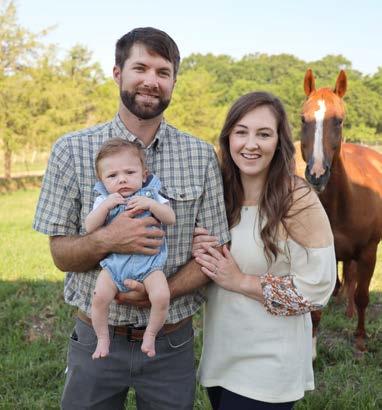
HenryFamily
Lawren c e County
“If he’s anything like me, Clint will grow up to love every second outside,” Mitchell said. “I just love being out in God’s creation.” T h e
Mitchell has expanded the farm’s footprint to 400 acres. He’s annually retaining ownership of nearly 1,000 stocker cattle and has diversified into cow-calf production. That’s in addition to streamlining record-keeping and

alfafarmers.org August 2023 | NEIGHBORS | 5
Brady Peek has an eye for innovation.
Since 2010, the Limestone County farmer has improved efficiency, diversification and his bottom line by trading equipment, fine-tuning planting, and investing in on-farm storage and out-of-state cropland.
“I like all parts of growing things, whether it’s a crop, a business, growing personally or trying to help the people that work for us grow,” said Brady, 30.
He and wife Anna, a teacher, annually farm 2,000 acres across Lauderdale and Limestone counties — one of Alabama’s fastest-growing areas. To preserve their ability to farm, the Peeks have gradually bought land, maintained healthy relationships with landlords and cleared timberland. They’ve also purchased land in Nebraska, which they rent to Corn Belt farmers.
“Being a farmer at heart, I’ve got

a strong connection to land,” Brady said. “Land here sells for commercial prices. That led me to looking toward somewhere I could buy farmland with the hopes of keeping it farmland.”
Back around Elkmont, the Peeks have improved yields on corn, cotton, soybeans and wheat through nutrient management, cover crops, GPS technology and increased irrigation.
“By not focusing on the number of acres we grow, we can focus on small details we believe make all the difference,” Brady said.
The Peeks custom farm, too, and haul grain and poultry litter. This diversifies their business, maximizes equipment and helps neighboring farmers. They’ve also added a petal patch and sweet corn field; produce is sold locally and promoted on social media.
Brady has improved on-farm storage — for inputs and grain. Two new grain bins improved harvest and marketing efficiency, and two more bins are planned within five years.

Though Brady hails from a generational farm family, cultivating Peek land wasn’t a sure bet. His father, Jeff, exited farming to focus on the family’s equipment business when Brady was 12.
Four years later, a desire to farm pushed Brady to plant 100 acres of soybeans with help from local farmers and his father.
“Brady’s a better farmer than I ever was,” Jeff said. “Sometimes when you grow up in farming, you have the passion, and sometimes you just think you do. Brady is actually passionate.”
Skills learned in his father’s shop help Brady run modern equipment with minimal expense. He sources machinery across the country, performs repairs and uses the equipment for a season. It’s then marketed worldwide.
Since marrying Brady in 2018, Anna has incorporated lessons learned on the farm into curriculum for fifth graders at Athens Intermediate School. Anna also runs farm errands, brings food to the field and rides in the tractor with Brady.
ThePeek Family LimestoneCount y
She’ll soon share her buddy seat with son Ridgeway, who was born in July.
“I’m excited for our kids to grow up on a farm, see the hard work that goes into it and learn everything they can from us,” said Anna, 29.
Brady praised Anna, calling his helpmate “the voice of reason.”
“She brings fresh perspective and gives good advice,” he said. “She’s the glue that holds everything together.” While growing Peek Family Farms, the Peeks have cultivated involvement in the Alabama Farmers Federation, where they serve on the State Wheat & Feed Grain Committee. Anna serves on the local Women’s Leadership Committee, while Brady graduated from the premier A.L.F.A. Leaders program, chairs the State Soybean Committee and has served as State Young Farmers Committee chair.
Brady is something of a farming evangelist — spreading good news about the life he loves.
“Every day is different,” Brady said. “And it’s kind of nice because one day something might break down, and we may have the worst day ever. But for me, it’s the hope that tomorrow will be the best day ever. And a lot of times it is.”
6 | NEIGHBORS | August 2023 alfafarmers.org
Armed with a chainsaw, open-cab tractor and vision for his family’s future, Whit Lovelady commenced clearing pastures long reclaimed by trees in 2013.
A decade later, cattle dot Lovelady’s land — a testament to the Talladega County farmer’s perseverance.
“I don’t think I’d farm if it wasn’t challenging,” said Whit, 32. “That’s why God made a farmer. Only certain people could take the beating and challenge and weather, the things out of your control. I’m not saying I’m special. It’s just challenging and different from any other career.”
Whit and wife Amanda manage 1,200 acres of hay fields and pasture around Alpine. Last year, they baled over 6,000 rolls of hay destined to feed their herd; stock local farms and stores; and supply producers out West. Equipment investments have increased efficiency, reduced labor and opened the door for custom farming.
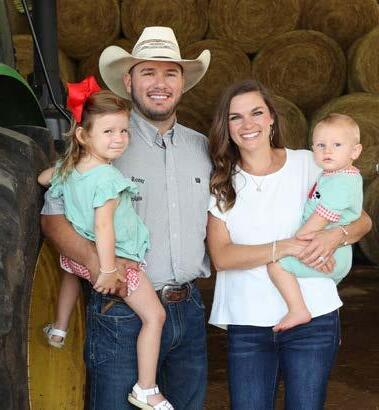
Whit and Amanda cultivated appreciation for the land on respective family farms before meeting at Auburn University. Whit’s grandfather taught him about cattle, while Amanda grew up on an Autauga County cattle and row crop farm.
The duo set goals before marrying in 2015: Grow Whit’s 10-head herd and raise their family on a farm.
Achieving those goals was a lesson in patience, Amanda said.
Whit worked off farm for six years, first at Blue Bell Creameries and then as an ag teacher. Amanda taught ag, too, as they invested salaries and summer vacations into the farm, steadily clearing land and increasing cattle numbers.
Their progress and passion paid off in November 2018.
“Whit came home and said, ‘You know that Charolais farm off Highway 76?’” said Amanda, 29. “He said, ‘We need to talk to them tonight. They want us to buy them out starting tomorrow.’”
Wallis and Martha Schuessler were renowned Charolais breeders. They were aging and down a farm manager, and the herd was in decline. The Loveladys were a godsend, Wallis said.
“The whole operation would have
fallen apart if it hadn’t worked out this way,” Wallis said. “Whit does a wonderful job.”

The Loveladys poured buckets of sweat equity into the farm, often heading there after school and working until midnight. They gradually bought the herd and equipment while learning the intricacies of registered cattle. Renting their mentors’ land was an answered prayer in an area known for rocky ridges and longtime leases.
Since 2020, both Loveladys have farmed full time. Whit directs daily production for their hay fields and herd, which includes 130 registered Charolais, 23 registered Angus and 120 commercial head. Amanda manages the books, helps in the hay field and checks cows, often with 3-year-old Annagrace and 1-year-old John Luke in tow.
“This farm won’t run without Amanda,” Whit said. “I’m proud of that.”
The Loveladys’ innovative spirit is spreading Cedar Roost Ranch’s name ID. Last year, they rented the farm to a music
ladyFamily
festival, where concessions included Cedar Roost Ranch hamburgers and sausage. They sell those products and more to local consumers, too.
While farm goals include expanding their herd and hosting a cattle sale, the Loveladys channel former careers when advocating through the Alabama Farmers Federation. Both have served as local Young Farmers chair and on the State Hay & Forage Committee. Amanda serves on the local Women’s Leadership Committee, while Whit is a county board member and leads local Cattlemen.
The Loveladys are quick to note their work, while important, isn’t for them.
“We’re generational builders,” Whit said. “We might not reap all the benefits, but that’s not what we’re here for. We’re building and expanding to where this can be an operation where you have an office, a meat store, a hay headquarters. We want a company, not just a farm.”
Tallad ega County
T
e Love
h
alfafarmers.org August 2023 | NEIGHBORS | 7
Public Ag Research Funding Vital Despite Decline
By Marlee Jackson
While a glance around many U.S. farms yields a picturesque view — giant tractors, grazing livestock and green fields — a second look shows the impact of decades of public agricultural research.
But advancements like GPS technology, high-quality beef and drought-tolerant seed could stall if stateside research dollars continue declining while competitors amplify spending.
“When ag tends to be doing well, when technology is advanced...we dial back on overall public sector expenditures,” said American Farm Bureau Federation (AFBF) Economist Bernt Nelson. “It’s difficult to measure private sector expenditures, but we’re seeing those shift, too.”
Public agricultural research and development (R&D) in the 20th century averaged $20 in benefits for every dollar spent, per the U.S. Department of Agriculture (USDA). R&D expenses have dropped by a third since 2002’s peak of $7.64 billion.
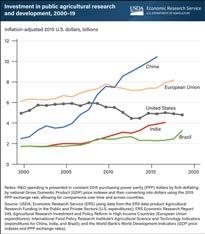
Meanwhile, countries like Brazil and India have maintained or increased spending. Then there’s China, which catapulted past competitors.
China spent more than $10 billion
on agricultural R&D in 2015. That’s double U.S. expenditures that year and quadruple China’s own R&D spending at the turn of the century.
Land-Grant Connection
Land-grant institutions like Auburn University (AU) perform about 70% of U.S. public agricultural R&D. That work is funded through a melting pot of resources and hinges on base funding through Title VII of the farm bill.
Land-grant research also relies on a mandatory state match, grants and private partnerships, which range from high-profile companies to farmerfunded checkoff programs.
Combining resources yields practical results, said AU College of Agriculture Dean Dr. Paul Patterson.
“The research topics are defined by the funding agency or company and are developed to respond to the needs of farmers, consumers, communities and businesses,” said Patterson, also director of the Alabama Agricultural Experiment Station. “Research can lead to higher-yielding plant varieties, improved crop and animal management strategies or cleaner water, along with many other benefits.”
Declining research dollars isn’t the only issue, Patterson said. Sixty-nine percent of U.S. land-grant research and education facilities are at the end of their life cycles, per research firm Gordian. Substantial investments were made in facilities post-World War II, Patterson said, as many veterans sought university careers. That Greatest Generation of
propelled the U.S. to global leadership in technology, science and agriculture.
Many of those facilities, including Auburn’s Funchess Hall, are still used today. Research conducted within Funchess includes agronomic and horticultural work with implications on farmers’ bottom lines.
Funchess was built in 1960.
“Simply put, 21st century science cannot be performed in a building built in the middle of the last century,” Patterson said. “Modern research instruments do not perform well in aging buildings with unstable environmental conditions.”
To help remedy the issue — and attract top-tier faculty — Auburn is replacing Funchess with a STEM+Ag Complex. The 265,000-gross-squarefoot lab and office building is funded through state support, AU bonds and private contributions. It’s a prime example of compiling funds to advance agriculture, Patterson said.


Farm Bill Funding
Meanwhile, D.C. decision-makers are crafting the 2023 Farm Bill, which impacts research and Extension funding.
AFBF and Alabama Farmers Federation policies support public funding for agricultural R&D, said the Federation’s Mitt Walker. While increasing Title VII funding is ideal, maintaining current levels is crucial.
“Public research is that critical connection between the technology companies develop and getting proven results to farmers who need it,” said Walker, who manages national affairs. “We have to move forward so we don’t get left out of the global marketplace.”
8 | NEIGHBORS | August 2023 alfafarmers.org
Present-day Funchess Hall Proposed STEM+Ag Complex
Planting seeds. Instilling values. Some don’ t get it, but we do.
Living in the country appeals to unique individuals. At Alabama Ag Credit, we are revolving lines of credit and short- term loans for equipment, livestock and other operational expenses. Call us today to learn about our competitive rates and how our relationship lending can make you feel right at home.

A l ab a m aAg C r edit. c o m Call 800.579.547 1 ME M B E R
Home of Jeremy & Ashley Ward, Elmore County
Alfa® supports education and athletics through scholarships, mentoring and donations.

Communities are built by those who work TOGETHER.
A.L.F.A. Leaders Class VI
Farmers Federation Announces New Class of A.L.F.A. Leaders















 By Tanner Hood
By Tanner Hood
The sixth class of the Agricultural Leaders for Alabama (A.L.F.A. Leaders) program was recently announced after a rigorous application and interview process. Eighteen participants will join the ranks of Alabama Farmers Federation county presidents, board members, legislators and leaders at local, state and national levels whose involvement grew through the premier leadership experience.
A.L.F.A. Leaders is sponsored by the Federation and sharpens the skills of agricultural community leaders by focusing on personal development, political involvement, effective communication and understanding of the Federation.

“We’re proud to offer a program that strengthens the abilities of young agricultural leaders in our state,”
said Federation President Jimmy Parnell, a graduate of the Alabama Agriculture and Forestry Leadership Development Program, a forerunner to A.L.F.A. Leaders. “We want to continue developing leaders who serve in important Federation roles and in positions to help our state and nation.”
The program begins in September and will conclude with a capstone project presentation and graduation at the 2025 Farm & Land Expo. Class VI participants will train in agricultural policy, industry leadership, communication and organizational involvement at six seminars in Alabama, Washington, D.C. and a to-be-determined international location.
Participants were chosen by an independent selection committee comprised of former class members; Alabama Agriculture and Forestry Leadership Development Program
graduates; and stakeholders with a vested interest in agricultural leadership development.
Selection was based on community involvement, personal ability and individual characteristics.



The program is designed for participants ages 25 to 45 who demonstrate leadership qualities and potential, in addition to strong character, reputation and a sound personal life, said Federation Young Farmers Division Director Hunter McBrayer.
“This class is a testament to the strong agricultural leadership found in Alabama,” said McBrayer, an A.L.F.A. Leaders Class IV graduate who now coordinates the program. “We’re excited to help them on their paths to becoming stronger leaders and servants in their communities and Alabama as a whole.”
Daniel Mullenix Lee County Cattle farmer and precision ag specialist
Isaac Jones Cherokee County Poultry farmer and veterinarian
Evan Nelson Jefferson County Hay and cattle farmer
Sid Phelps Tallapoosa County Cotton marketing specialist
Ellie Watson Autauga County Sweet Grown Alabama director
Joe Corcoran Barbour County Row crop and cattle farmer
Cara Cornutt Marshall County Row crop, cattle and agritourism farmer
Josh McCutcheon Blount County Poultry farmer
Ali Gotcher Colbert County Cattle farmer and Extension agent
Laura Beth Gamache Lee County Ag sales representative
Whitney Haynes Cullman County Row crop and cattle farmer
Matt Smith St. Clair County Sod and cattle farmer
Destry Hopper Baldwin County Row crop, vegetable and cattle farmer
Rejeana Gvillo Hale County Senior commodity analyst
Noel Welch Pike County Poultry farmer and loan officer
Trevor Collier Lauderdale County Poultry and cattle farmer
Nic Cornelison Jackson County Managing partner at Lake Majestik Cattle Co. and construction company president
alfafarmers.org August 2023 | NEIGHBORS | 11
Sidney McKathan Covington County Beekeeper
Soy Fuels Alabama-Made Renewable Diesel
8,000 barrels of soy-based renewable diesel daily and made its first commercial sale in June.
“The primary limiting factor on that equipment is the hydrogen we have available,” said Rice, gesturing toward the site’s lone hydrogen plant built in the early 2000s.


Once the planned second hydrogen plant comes on line next year, renewable diesel capacity is expected to reach 14,000 barrels a day, said Mark Blanchard.
this is just the beginning, as we progress on our commitment to a cleaner environment by creating a sustainable growth path for the energy transition.”
Soybean oil is Vertex’s chosen feedstock because of availability, economics and sustainability, Blanchard said, though other fats could be used. Options include vegetable oil, animal tallow or distillers corn oil.
By Marlee Jackson
Renewable diesel made in Alabama and destined for West Coast buyers has an unconventional origin — U.S. soybean farms.
“We use pressure, heat and hydrogen and actually cause a chain reaction to make a product that’s identical to diesel fuel, except it was produced from a new carbon product — soybeans,” said Vertex Energy Executive Vice President Bart Rice.
Soybean oil is the feedstock, or base, of renewable diesel produced at Vertex’s Mobile refinery. The Texas company bought the plant in April 2022, a move that provided continuous employment for over 200 Gulf Coast workers, per Mobile Chamber CEO Bradley Byrne.
While Vertex primarily produces conventional gasoline, jet fuel and diesel at the Mobile refinery, its renewable diesel addition went live this spring. Hundreds of local construction workers rallied to swiftly and safely build the new network of pipes, scaffolding and technology-driven, silo-like reactors in just a year.
Vertex now manufactures up to
Blanchard is Vertex’s manager of planning, analysis and VGO trading, tasked with economic forecasting and nominations for the plant’s base needs. That includes soybean oil for renewable diesel. Their product is different from more commonly known biodiesel, he said. Renewable diesel has the same chemical composition as petroleum diesel, making it compatible with existing diesel engines. Biodiesel must be blended with conventional diesel, he said.
Vertex CEO Benjamin Cowart is a Mobile native. He touted renewable diesel’s sustainability factor during a ribbon-cutting this spring, where guests included Gov. Kay Ivey. During the presentation, he also highlighted the company’s commitment to community, including school engagement projects and Make-A-Wish donations.
“We’re not just cutting ribbons; we’re cutting emissions,” Cowart said. “We’re also carving a new path for this site, this city and the great state of Alabama. The opportunity to bring this kind of innovation to my hometown and Alabama is incredibly
Vertex’s soybean oil is a byproduct of soybean-crushing facilities. The soy meal is often used for animal feed; oil is used for cooking or fuel.
While Alabama soybeans are likely used in Vertex’s renewable diesel, the state’s low acreage in contrast to Midwestern powerhouse producers means the feedstock is barged and railed in from a wide circumference.
Alabama farmers harvested 355,000 acres of soybeans in 2022, according to the U.S. Department of Agriculture. Total national harvest was 88.34 million acres.
Last year’s Alabama yields averaged 41 bushels an acre. It was a good crop but nowhere large enough to meet Vertex’s demand, said Alabama Farmers Federation Soybean Division Director Carla Hornady. She and soybean farmerleaders will meet with Vertex staff this month during the Federation’s Farm & Land Expo in Mobile to learn more about the production process — and their seat at the renewable fuel table.
“We’re excited to hear how Vertex uses our soy and see how we can work more directly together,” Hornady said. “The farm economy is tough, so we’re interested to hear proposals that could add more value to Alabama farmers’ products.”
Learn more at VertexEnergy.com.
meaningful. I believe
12 | NEIGHBORS | August 2023 alfafarmers.org
Soybean oil is the base of renewable diesel produced at Vertex Energy’s Mobile refinery.
Depredation Licenses Available for Cattle Farmers Black



Black vultures are quickly becoming a predator of young calves in Alabama. To combat the issue, the Alabama Department of Agriculture and Industries (ADAI) is issuing depredation permits to help livestock producers manage the increasing threat.
ADAI Commissioner Rick Pate said the department received complaints from producers and state ag organizations regarding the migratory birds.
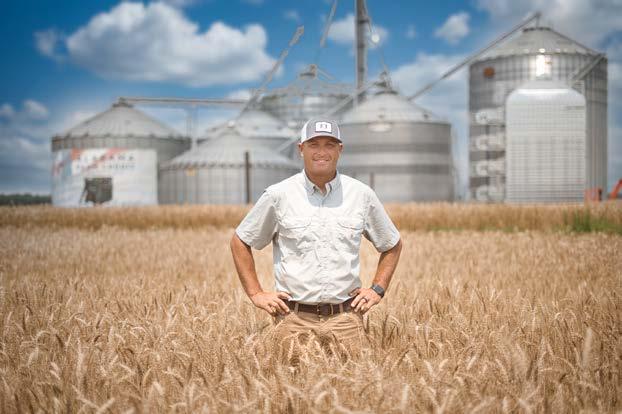
“We applied for and were granted a Migratory Bird Depredation Permit through the U.S. Fish and Wildlife Service (USFWS),” Pate said. “This permit allows livestock producers to manage these predatory vultures.”

Farmers most often see black vultures stalking prey during calving season, said Alabama Farmers Federation Beef Division Director Chris Prevatt.
Permittees are bound by several restrictions, according to ADAI. The maximum number of vultures taken in Alabama cannot exceed 500, while each permit holder is allowed to take three birds as long as the statewide maximum has not been met. Permittees must use a shotgun no larger than a 10-gauge with nontoxic shot.
Vultures must be reported within 48 hours. If a permit holder does not take any birds, they must still report “no birds taken” on their registered account with USFWS. When Alabama’s maximum harvest threshold is reached, permittees will be informed by email.
Other migratory birds are off-limits with this permit, including turkey vultures. Unlike black vultures, turkey vultures have a red head with white beaks and are typically browner.
ADAI staff encourages using non-lethal deterrent methods



Together we grow. ALABAMAFARMCREDIT COM
"With Alabama Farm Credit, you’re dealing with local people with boots on the ground, and that gives us the ability to have a partner who understands what we are doing all the time. "
-Stewart Mcgill AFC Director & Partner
at Tate Farms
Hear
from our members.
Vulture alfafarmers.org August 2023 | NEIGHBORS | 13
Relationships Take Root on Tennessee Valley Tour
By Jeff Helms
Growing knowledge and cultivating relationships were on the itinerary as 30 producers traversed the Tennessee Valley on the Greenhouse, Nursery and Sod (GNS) Tour June 28-29.
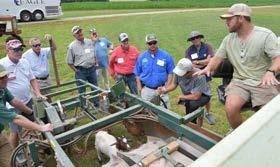

Bullock County nursery owner Hunter Smith said the two-day trek propagated ideas for his farm.
“This is an incredible tour,” he said. “We are seeing the different techniques other people use to get the same job done — some they’ve been using since the 1940s. We saw an early irrigation system that works, and they don’t try to change it.”
Schaefer Nursery in Winchester, Tennessee, is home to one of the South’s first intermittent irrigation systems. Second-generation grower Molly Schaefer Still said the timer-controlled misters above outdoor beds are key to her family’s longevity in producing woody ornamental, bare-root liners (or starter plants). While in the Volunteer State, farmers also toured Tennessee Valley Nursery in Winchester, known for dogwood budding.
Back in Alabama, stops included HudsonAlpha Institute for
The tour was organized by the Alabama Farmers Federation and Alabama Nursery and Landscape Association (ALNLA). The Federation’s Blake Thaxton said growers designed the educational program, sponsored by Alabama Farm Credit, Nufarm and Agri Spray Drones.
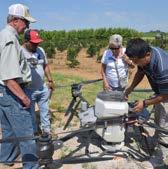
“When I planned this tour, the GNS Committee asked for two things — they asked to go to HudsonAlpha, and they
tour following an overview by President Neil Lamb.
“What HudsonAlpha has become, in many ways, is a printing press for DNA,” said Harkess, a faculty investigator. “We can extract DNA from any organism, sequence its genome and understand the four nucleotides — the order of every single one — across the chromosomes of any plant we want to study.”
Elmore County nursery owner Scott Poague said the HudsonAlpha tour was a primer for farms visited on Day 2.
“It’s amazing the biotechnology work going on there,” Poague said. “We need that kind of research for our agricultural operations.”
Russell Wood said ALNLA’s partnership with the Federation is about cultivating relationships.
“We want to get members together because when they are in the same place at receptions or educational events, a lot of good conversation happens,” said Wood, the group’s executive director.
Jason Lazenby of Young’s Plant Farm in Auburn said the tour provided a fresh perspective.

Harkess led the greenhouse
“So often you get caught up in your own circumstances, and you don’t realize what you’re not seeing,” he said. “You come to something like this and don’t expect to really learn something new. Then you get here, and you realize how much you don’t know and how important sharing knowledge is.”
Farmers checked out plants that researchers are studying and sequencing at HudsonAlpha.
Seth Hubert of Hubert Family Farms in New Market shared how his tulip bulb planter works during the GNS Tour in late June.
14 | NEIGHBORS | August 2023 alfafarmers.org
Spray drone specialist Dr. Steve Li, right, demonstrated the unmanned aerial vehicle’s potential uses for green industry growers during the GNS Tour.
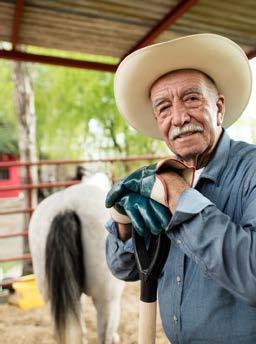

greathearingbenefits.com/farmbureau-al Great Hearing. Great Benefits. That Simple. As a member of the Alabama Farmers Federation, you have access to the Great Hearing Benefits (GHB) program. GHB provides family members access to hearing care and hearing aids at discounted rates. • Up to 50% below-MSRP pricing on today’s top hearing aid technology • Free 60-day trial. • 3-year warranty and service plan. • 4,500 nationwide locations for free hearing aid service or repair. • If your hearing aids are lost, stolen or damaged within the first three years, we’ll replace your hearing aids! • Share your benefits with up to three immediate family members. 25% OFFonJabra AudioProducts MemberSavingsStartat Call now to schedule your appointment 1 (877) 682-7837 alfafarmers.org August 2023 | NEIGHBORS | 15
DRURYNamed Alabama Catfish Farmer of the Year
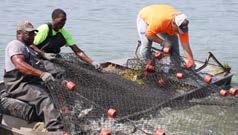


Greensboro is Alabama’s Catfish Capital. After catfish are harvested from man-made ponds, they’re taken to processing plants in west Alabama and Mississippi. Basic loading equipment consists of a commercial seine (a large, weighted net), a hydraulic seine reel, a flat-bottomed aluminum boat, tractors and trucks.
By Maggie Edwards
Golden west Alabama sunshine, catfish ponds and green pastures of grazing cattle paint the picture of excellence at Drury Catfish and Cattle in Greensboro.
“Farming is really all I have ever known,” said Wallace Drury, 35. “I spent my childhood here and always knew I wanted to come back to the farm.”
Wallace further cultivated a love for the land as he earned an ag degree from Auburn University and worked for Alfa Insurance and the Alabama Farmers Federation for six years.
That same work ethic, drive and passion earned him the title of 2023 Alabama Catfish Farmer of the Year. He was selected by fellow catfish farmers and will promote U.S. Farm-Raised Catfish over the next year.
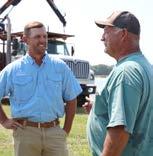
“The award is an honor for me. My dad, Bubba Drury, was named Alabama Catfish Farmer of the Year about seven years ago,” Wallace said. “It is hard to put into words what it means to wake up
and be with my dad every day and learn from him on the farm. I look up to him and hope to be half the man he is.”
Farmers like Wallace and Bubba are essential to making the catfish industry in Alabama a success, said Federation Catfish Division Director William Green.
“Alabama ranks second in the
Alabama Farmers Federation Catfish Division Director William Green, Federation Area 6 Organization Director Mac Higginbotham and Alabama Catfish Farmer of the Year Wallace Drury visit on Drury’s farm in Greensboro.

country for catfish production,” Green said. “Wallace is one of the many faces of U.S. Farm-Raised Catfish. Catfish is a clean and healthy product that feeds people around the world, and we’re grateful for the growers who make that happen.”
After Wallace came back to the farm full time in 2018, he and Bubba began implementing more technology.
“We put in an oxygen monitoring system we can see and operate from our iPad and phones,” Wallace said. “That has been a valuable tool over the last couple of years, and we were excited to make the change.”
In the heart of Alabama’s Catfish Capital, boots hit the ground early.
“There is no typical day for us, but in the summer, our day starts at daylight,” Wallace said. “My dad starts feeding while I check ponds and oxygen
“ ”
The award is an honor for me. My dad, Bubba Drury, was named Alabama Catfish Farmer of the Year about seven years ago. It is hard to put into words what it means to be with my dad every day and learn from him on the farm. I look up to him and hope to be half the man he is.
Wallace Drury, 2023 Alabama Catfish Farmer of the Year
16 | NEIGHBORS | August 2023 alfafarmers.org
monitors. Then we switch, and I feed the second half of the farm.”
The father-son duo raises about 5 million pounds of catfish annually. Additionally, they have 600 head of cattle, raise Brangus bulls and have a small registered herd.
“We have channel catfish that we multiple crop, which means there are different times that we stock the ponds. We sell fish from those ponds a couple times a year,” Wallace said. “We also raise hybrid catfish, which are raised in a single year in a single pond and are only harvested one time.”
Farming has been in the family for generations, Wallace said.
“Before my father started our row crop operation in the ‘70s, this was a dairy,” he said. “After gradually building catfish ponds, my dad farmed his first crop of fish in the early ‘80s.”
Wallace and wife Sarah Beth, 34, are raising the farm’s fifth generation — daughters Kennedy, 7, Rowen, 4, and Molly, 4 months.


“It means so much to me to have my three girls outside on the farm,” he said. I hope they learn work ethic and know it takes hard work to succeed.”
For Sarah Beth, the best part of farming is seeing her girls grow up the same way their dad did.
“It’s so special to me. They learn so much every day and see how hard their dad works and how much time and sacrifice goes into the family business,” said Sarah Beth, a counselor at Southern Academy in Greensboro. “They have so many questions all the time. They love when they get to go to work with Dad.”
In addition to volunteering with the Federation’s Alabama Catfish Producers, Wallace serves as vice president of the

Hale County Farmers Federation.
“The Federation does unbelievable things for farmers,” Wallace said. “We get tied up on the farm and know that we have Federation folks in Montgomery fighting for us. I appreciate what the organization does for our farm and our family.”
The Federation’s Green said most of Alabama’s roughly 85 catfish farms are in Black Belt Region counties of Hale, Dallas, Greene, Perry and Sumter.
Wallace said he’s proud to be in that number.
“It’s good to see young people still involved in the catfish industry,” Wallace said. “U.S. Farm-Raised Catfish is a healthy product, and it makes me proud to put something on my family’s table and tables around the world.”
Learn more about U.S. Farm-Raised Catfish at uscatfish.com.

alfafarmers.org August 2023 | NEIGHBORS | 17
Wallace Drury said he’s proud to raise his family on their catfish farm with wife Sarah Beth. They have three daughters — Kennedy, Rowen and Molly.
YOUR SOYBEANS ARE GOING

INTERNATION AL
The beans in your Alabama fields today are destined to see the world. Last year, we exported $83.8 million worth of soybeans. That’s a lot of overseas opportunity for one year. And we’re always growing new markets abroad to help keep this demand going strong. And if you’re wondering how far your soybeans can go, we’re charting more ways to keep your ship coming in. Learn more about the story of soy at unitedsoybean.org/hopper.

Source: U.S. Department of Agriculture Economic Research Service. ©2023 United Soybean Board. [62728-4 5/23]
Classroom in the Forest:

Dixon Center Pushes Hard Work, Dirty Hands
 By Maggie Edwards
By Maggie Edwards
Tucked away under longleaf pines and cypress swamps stands a hidden gem in Alabama’s Wiregrass region.
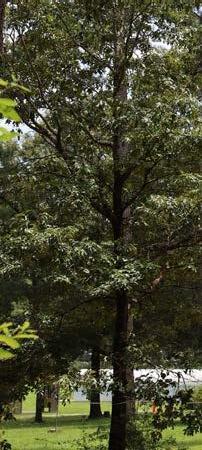
“The goal was to build a place where Auburn University (AU) students, professionals and private landowners could learn about forestry and natural resources,” said Joel Martin, the Solon Dixon Forestry Education Center (SDFEC) director. “Solon Dixon wanted to give people the opportunity to sit in a classroom and be in the woods at the same time.”
SDFEC, located outside of Andalusia, was gifted to AU by Solon and Martha Dixon in 1974. The family donated the homeplace; 5,350 acres; and $500,000 to build the first facilities.
“The Dixon family land dates back to the 1850s,” Martin said. “Solon and his brother, Charles, gathered land and built a timber industry over time, owning sawmills and pulp mills.”
That land now houses a summer camp for 60-80 college students a year. Students often call the SDFEC “Solon Dixon,” paying homage to the man responsible for their classroom in the forest.
“Solon was often quoted saying he wanted a place where students could
get their hands dirty,” Martin said.
The center welcomed its first group of AU forestry practicum students in 1980. In 2012, the center’s first wildlife practicum took place.
“This camp is a great course to introduce people to forestry,” said Tony Logan, who was at Solon Dixon in summer 1987. “I had been exposed to the industry because my dad was a forester, but some of my classmates had not. I learned a lot and learned how to do things right.”

Thirty-one years later, Tony’s son, Cal, stepped onto the soil of the SDFEC.
“It means the world to me to follow Dad’s footsteps. Being a forester was always my dream,” said Cal, who serves on the Alabama Farmers Federation State Young Farmers Committee.
“Seeing his class picture at summer camp was a surreal moment for me. It is special to know my dad went through the same things I did, and now we are business partners at Cliff A. Logan and Associates, the forest management

alfafarmers.org August 2023 | NEIGHBORS | 19
Above: Auburn University students get real-world, practical experience in forestry and wildlife management at the Solon Dixon Forestry Education Center near Andalusia. Right: Junior Brooks Milling said his favorite class was forestry mensuration, which covers dimensions, form, age and increment of trees.
service my grandfather founded.”

Spending a summer at the center is a requirement for students in AU’s College of Forestry, Wildlife and Environment (CFWE). The Logans of Greene County agree it was the most influential part of their college experience.
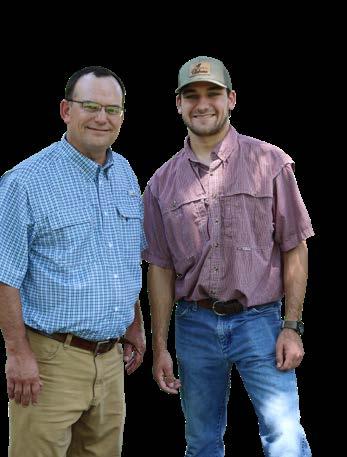
“Summer camp was a great opportunity to create friendships, but it also exposed me to the science behind forestry,” said Cal, who attended in 2018. “Students sit in a classroom and learn about mapping and walk out the door and do it. The opportunity to put what you are learning into action the second you learn it helps you remember it so much better.”
The SDFEC has impacted hundreds of lives, giving each AU student the tools needed to succeed, said John Gilbert, SDFEC
who spent summer 2001 as a student at Solon Dixon. “Wildlife students come as juniors and seniors, while forestry students are rising juniors. This is our forestry students’ first field experience. For many, it’s their
The forestry summer program is broken into nine-week intervals,
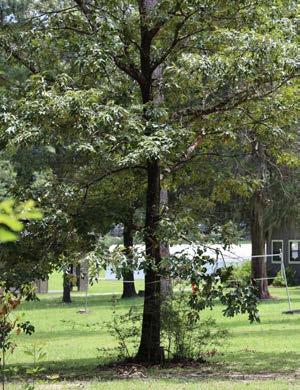
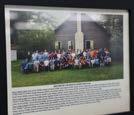
with each week focusing on a new class. Classes include forest mensuration, forest biology, field surveying, forest operations and forest management.
Current student Brooks Milling spent his summer learning the ropes of forestry.
“I have picked up a lot of knowledge and have learned more than I ever could in a classroom,” Milling said.

Solon Dixon is a treasure, said Federation Forestry and Wildlife Divisions Director William Green.
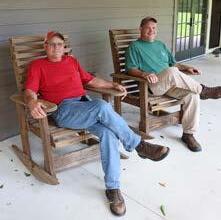
“Forestry is Alabama’s top industry with over 23.1 million acres of forest land,” said Green, an ex officio member of the AU CFWE board. “The Dixon family left this as a way to educate students but also act as a production forest to pay for itself. It is a living museum.”
In addition to AU summer practicum, the center hosts natural resources groups throughout the year for professional development and hands-on learning. That includes the Alabama Forestry Commission and its recently revamped Forestry Academy.
“I don’t know if it was a vision or just how it was built, but all these front porches are gathering places for students and their instructors,” Martin said. “As much learning happens in those rocking chairs as it does in the classroom.”
Gilbert echoed Martin, adding there’s a difference in being at the center and sitting in a lab on campus.
“This center builds a network of lifelong friendships and gives students an experience they will not get anywhere else,” Gilbert said.
Left: Father-son duo Tony and Cal Logan of Greene County attended the Solon Dixon Forestry Education Center during their time studying forestry at AU. Below: Walls in the center’s dining hall are covered with framed photos of each year’s
20 | NEIGHBORS | August 2023 alfafarmers.org
Solon Dixon Forestry Education Center Director Joel Martin and Assistant Director John Gilbert are integral to the center’s success, spending time in the classroom and woods teaching Auburn students. Gilbert attended forestry practicum as a student in 2001.
Emergent Plus Membership: $19/month
Platinum Membership: $39/month
MASA MTS works hand-in-hand with benefits health plan administrators and transport companies to ensure you and your family have no out-of-pocket costs no matter which provider completes the ambulance transport within the continental United States, Alaska, Hawaii, and while traveling in Canada.
MASA MTS works hand-in-hand with benefits health plan administrators and transport companies to ensure you and your family have no out-of-pocket costs no matter which provider completes the ambulance transport within the continental United States, Alaska, Hawaii, and while traveling in Canada.
SCAN
QR CODE TO START ENROLLMENT NOW:

SCAN QR CODE TO START ENROLLMENT NOW:
SOURCES: 1 HealthCareInsider, 2021 | 2 National Emergency Medical Services Assessment, 2020 | 3 FAIR Health, 2021
This material is for informational purposes only and does not provide any coverage. The benefits listed, and the descriptions thereof, do not represent the full terms and conditions applicable for usage and may only be offered in some memberships or policies. Premiums and benefits vary depending on the benefits selected. For a complete list of benefits, premiums, and full terms, conditions, and restrictions, please refer to the applicable policy for your state and territory. MASA MTS products and services are not available to residents of ND, NJ, NY and WA. MASA MTS utilizes third-party transportation service providers for all transportation services and does not own or lease any vehicles. MASA MTS is a registered service mark of MASA Holdings, Inc. a Delaware corporation and an affiliated company with MASA Insurance Services, Inc.
Did You Know? In the State of Alabama: Birmingham Montgomery MASA MTS works hand-in-hand with benefits health plan administrators and transport companies to ensure you and your family have no out-of-pocket costs no matter which provider completes the ambulance transport within the continental United States, Alaska, Hawaii, and while traveling in Canada. SCAN QR CODE TO START ENROLLMENT NOW: OVER 670,000 total emergency responses2 Emergency air transport can cost on average $24,0003 A ground ambulance can cost an average of $1,5001 Did You Know? In the State of Alabama: Birmingham Montgomery MASA MTS works hand-in-hand with benefits health plan administrators and transport companies to ensure you and your family have no out-of-pocket costs no matter which provider OVER 670,000 total emergency responses2 Emergency air transport can cost on average $24,0003 A ground ambulance can cost an average of $1,5001 Did You Know? In the State of Alabama: SOURCES: 1 HealthCareInsider, 2021| 2 National Emergency Medical Services Assessment, 2020 | 3 FAIR Health, 2021 This material is for informational purposes only and does not provide any coverage. The benefits listed, and the descriptions thereof, do not represent the full terms and conditions Birmingham Montgomery MASA MTS works hand-in-hand with benefits health plan administrators and transport companies to ensure you and your family have no out-of-pocket costs no matter which provider completes the ambulance transport within the continental United States, Alaska, Hawaii, and while traveling in Canada. SCAN QR CODE TO START ENROLLMENT NOW: OVER 670,000 total emergency responses2 Emergency air transport can cost on average $24,0003 A ground ambulance can cost an average of $1,5001 Did You Know? In the State of Alabama: SOURCES: 1 HealthCareInsider, 2021| 2 National Emergency Medical Services Assessment, 2020 | 3 FAIR Health, 2021 This material is for informational purposes only and does not provide any coverage. The benefits listed, and the descriptions thereof, do not represent the full terms and conditions applicable for usage and may only be offered in some memberships or policies. Premiums and benefits vary depending on the benefits selected. For a complete list of benefits, premiums, and full terms, conditions, and restrictions, please refer to the applicable policy for your state and territory. MASA MTS products and services are not available to residents of ND, NJ, NY, and WA. MASA MTS utilizes third-party transportation service providers for all transportation services and does not own or lease any vehicles. MASA MTS is a registered service mark of MASA Holdings, Inc., a Delaware corporation and an affiliated company with MASA Insurance Services, Inc. Birmingham Montgomery
OVER 670,000 total emergency responses2 Emergency air transport can cost on average $24,0003 A ground ambulance can cost an average of $1,5001
ANDY

Today, I watched the Andy Griffith Show all day long. I had the day off, so I visited Mayberry.
I started with the very first episode, when Andy welcomes Aunt Bea to Mayberry. I watched a handful of others until it was time for bed. The last episode I watched was the one where Barney joins the choir. A classic.
Over the last twelve hours, I’ve seen it all. I watched the Mayberry Bank almost get robbed — twice. I’ve seen Barney muff things up with Thelma Lou. I tasted Aunt Bea’s awful pickles.
And just when I thought it couldn’t get any better, Andy taught Opie to stand up to a bully.
During my childhood, the Andy Griffith Show came on the local station every weekday at 5. Our TV only got three channels, and two came in fuzzy.
So I watched Andy each afternoon until I’d practically memorized the dialogue, the closing credits and even the commercials.
Commercials like the one with Coach Bear Bryant advertising for South Central Bell. “Have you called your mama today?” Bear would say. “I sure wish I could call mine.”


And the advertisements which all featured some unfortunate kid named Mikey, eating Life cereal at gunpoint.

Of course, there was the commercial with “Mean” Joe Greene, tossing his sweaty football jersey at an innocent child who offered him a Coca-Cola.
My childhood was not easy. After my father took his life, I was a lonely boy who watched a lot of TV. I was trying to escape my own world by living inside a TV. I enjoyed all the classic reruns. Bonanza, Gunsmoke, Twilight Zone, I Love Lucy, Gilligan’s Island, Batman, and I pledged my eternal love to
Barbara Eden. The Beverly Hillbillies were OK in a pinch. Green Acres was OK. And the Partridge Family? Gag me with an electric harpsichord.
But Andy was my hero.
Recently, I visited Andy Griffith’s hometown in Mount Airy, North Carolina. I kicked around town for a week and had a famous time.

I visited Andy’s old barber shop, I sat in a ‘62 Ford Galaxy squad car and chewed the fat with a few local tour guides. I even interviewed people who knew Andy personally.
I visited Andy’s childhood house and left a postcard in the mailbox. I hiked along the river where he fished. I put a jar of pickles on Aunt Bea’s grave.

And that Friday, I visited the Andy Griffith Museum for an interview with Betty Lynn, the actress who played Thelma Lou. Her assistant rolled her into the room. Betty was elderly, but her hair was still persimmon red.
I gave her a dozen pink roses.
“For me?” she said. “Oh, how marvelous.” And her voice sounded just like the Thelma Lou I grew up with.
Later, I ate a pork chop sandwich at the Snappy Lunch, and I watched the sun go down over Mount Airy, sitting on my truck hood.

My heart has been in Mayberry since my early years. And it still is, I guess. I know it is only a make-believe town, but it is real to me. And to this day, I can’t enjoy modern television because nothing compares with it.
Reality TV is a joke. Cable news is not for me. I don’t care to watch celebrities learn how to dance for cash.
But I get Andy. And though I never knew him, he seems to understand me.
I love you, Andy Griffith. And I always will. ■
• 50 plugs per tray
• Plugs have an intact root ball
• Plugs establish quickly Best of all Plant plugs in October and harvest sweet strawberries in the Spring!
FREE CATALOG 22 | NEIGHBORS | August 2023 alfafarmers.org
It’s time to reserve strawberry plugs for October delivery!
Go Back to School with
Alabama 4-H
By Justin Miller
As students head back to school, Alabama
4-H is ready to welcome new and previous members to another exciting year in 4-H. Enrollment is open for youths ages 9 to 18.


Molly Gregg, the Alabama Cooperative Extension System’s assistant director for 4-H programs, said there are many ways students can become involved in 4-H.
“No matter your interest, there is something for everyone in 4-H,” Gregg said. “Alabama 4-H helps young people see themselves as unique, resilient, lifelong learners who actively participate in their own future.”
About Alabama 4-H
Alabama 4-H is the state’s leading youth development organization. It is part of the Alabama Cooperative Extension System and works with young people in all 67 Alabama counties. For more than 100 years, Alabama 4-H has empowered youth to use their heads, hearts, hands and health to become their best selves and achieve their goals.
“4-H believes all young people — as members of families, communities and citizens of a global society — should have the opportunity to reach their full potential,” Gregg said.


Program Opportunities
There are many different types of 4-H programs and clubs. In the 2022 club year, Alabama 4-H offered more

animals & agriculture
than 11,000 educational activities and more than 3,100 clubs statewide to its members.
These programs and clubs are delivered by regional agents, as well as community volunteers, corporate partners, alumni and parents. There are eight main programming categories, including the following:
l animals and agriculture
l creative arts
l environmental education
l healthy living
l outdoor education

l leadership and citizenship
l science and technology
l Alabama 4-H Science School
4-H clubs are delivered inside and outside of school. In-school clubs are one of the most important modes of delivery, and 4-H regional agents lead programming in more than 1,000 Alabama schools.
“In-school programs are a great way to introduce students to 4-H,” said Nancy Alexander, an Alabama 4-H specialist. “We hope they come to love 4-H and engage in various 4-H clubs outside of school throughout their academic careers.”
Alexander said the great thing about 4-H clubs that meet outside of school is members can join or start clubs that focus on a particular interest. For example, members who enjoy fishing can be part of their county’s sportfishing club.

Enroll Today!
Parents and guardians can enroll their student in Alabama 4-H through the 4HOnline platform. Find more information about enrollment at Alabama4H.com, or contact your county Extension office to speak with an Alabama 4-H agent.
“Alabama 4-H has a commitment to helping young people thrive by providing opportunities to be healthy, caring and responsible,” Gregg said. “Let’s work together this upcoming club year to learn, lead and make a difference in our communities.”
leadership & citizenship healthy living
environmental education
alfafarmers.org August 2023 | NEIGHBORS | 23
Rodeo Dreams Fulfilled for University of West Alabama Athletes
 By Tanner Hood
By Tanner Hood
Dirt, hooves and bucking chutes filled the Ford Wyoming Center in Casper, Wyoming, as the University of West Alabama (UWA) celebrated three national titles at the College National Finals Rodeo June 9-17.
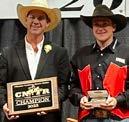
J.T. Ellison, Taycie Matthews and the women’s rodeo team all won national championships during the two weeks of festivities celebrating collegiate athletes living the cowboy way of life.
“Winning a team championship seemed almost unattainable, but winning three altogether was unimaginable,” said UWA Rodeo Team Head Coach Daniel Poole. “I encourage all our student athletes to work hard while always having integrity. That’s what it takes to win against this level of competition.”
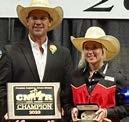
That hard work helped the women’s team bring home the hardware. Teams are ranked based on points earned in individual events. Several cowgirls finished with enough points for UWA to beat its closest competitor by over 100 points and capture the school’s first team national championship since the 1971 football season.
In addition to helping the women’s team secure its title, Matthews claimed the fastest time in barrel racing. Barrel racing requires horse riders to run a cloverleaf pattern around three barrels in the quickest time possible. The contest helped the Wynne, Arkansas,

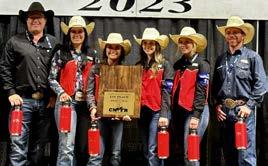



native finesse skills she’ll use this fall while vying for a spot in the renowned National Finals Rodeo.
Rounding out UWA’s list of winners is Ellison from Calera, who maintained the fastest average time in steer wrestling. Steer wrestlers chase steers on horseback, jump off, grab them by the horns and wrestle them to their side in the fastest time possible. In an event where tenths of a second matter, Ellison outpaced his closest competition by more than a second.
It was a proud moment for UWA, Poole said.
“Western culture is increasing, and it couldn’t be more fitting for a rural school on this side of the Mississippi River to win national championships in
rodeo,” Poole said. “Rodeo is a great family event and re-centers old school values we seem to be moving away from. I’m excited we’re able to do this in Alabama.”
Poole said donors and fundraisers are critical to the team’s success. The Sumter County Farmers Federation (SCFF) is one of the most generous, he added.
“We can’t thank the Sumter County Farmers Federation enough for their support,” Poole said. “The money goes directly to the program to buy new equipment and manage and upgrade facilities. As one of
our longest and most faithful sponsors, it would be impossible to compete without the Farmers Federation.”
SCFF Past President Pat Buck attested to that faith and their support of UWA.
“The rodeo team brings in lots of local students and many from across the country,” Buck said. “The students, staff and faculty of the university are a big part of our community, and we’d do anything to support them. They’re the biggest supporter of this county through employment, so we always want to give back.”
1 2 3
1 and 2: University of West Alabama (UWA) steer wrestler J.T. Ellison and barrel racer Taycie Matthews received national championship buckles in Wyoming. 3:UWA women’s rodeo team won a national championship at the College National Finals Rodeo.
24 | NEIGHBORS | August 2023 alfafarmers.org
The Sumter County Farmers Federation (SCFF) annually donates to the UWA rodeo team. From left are Assistant Coach Lucas Brown, Head Coach Daniel Poole and SCFF Past President Pat Buck.
French to Focus on Youth Livestock Programs
Sarah-Jane French is bringing enthusiasm, experience and fresh insight to Alabama’s youth livestock programs, thanks to a new position funded by the Alabama Legislature, housed at Auburn University (AU) and created with support from the Alabama Farmers Federation. French began as a professor of practice for youth livestock programs in June.
“I love that my job is to serve the youth of Alabama,” French said. “We want to keep and build interest in livestock programs. My No. 1 goal is to bridge the gap between all our programs and partner organizations so we can work even better together.”
In 2022, the Legislature appropriated $125,000 for the position in the Education Trust Fund budget. Following a nationwide search, French was hired and began work after graduating with her master’s in animal science from Tarleton State University.

Federation President Jimmy Parnell said he looks forward to seeing French
grow current programming and expand interest in youth livestock competitions. That includes the Federation’s Jr. Livestock Expo, Alabama National Fair shows, 4-H, FFA and AU educational courses such as Beef U.
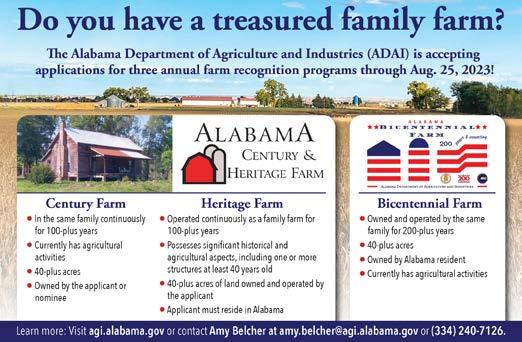
“We believe supporting youth through livestock programs is an investment in the future of agriculture,” Parnell said. “They learn significant skills related to responsibility, hard work and how to raise quality animals. We’re excited to work with Sarah-Jane and thank the Legislature for making her work possible.”
French was raised on a vegetable farm in rural Virginia, where she grew up barrel racing and working farmers markets with her father. The farm diversified into show goats in 2010, leading French to discover a penchant for competitive livestock judging.
National championships followed as a member of 4-H and at Butler Community College in Kansas. Thanks to hard work and scholarships, including one from her county Farm Bureau, French judged livestock at Texas Tech University, where she earned a degree in animal science.
Connections formed through livestock competitions led French to Alabama, she said. Helping the state’s students build similar networks is one of her goals, French continued.
“I come from a program in Virginia that was special to youth and livestock,” she said. “They made us feel special and want to continue doing it. You don’t have to grow up how I did on the farm, but you can understand how and why we raise livestock. That’s what I hope youth get out of our programs.”
alfafarmers.org August 2023 | NEIGHBORS | 25
French
2023 ANNUAL MEETING DATES, TIMES & LOCATIONS
COUNTY DATE TIME BUILDING ADDRESS CITY Autauga Wed., Aug. 16 7:00 p.m. Autauga County Ag Center 2224 Hwy. 14 W Autaugaville Baldwin Thurs., Aug. 3 6:00 p.m. Baldwin County Farmers Federation Building 21332 Hwy. 59 Robertsdale Barbour Thurs., Aug. 17 7:30 p.m. Texasville Community Center 2429 County Rd. 53 Clayton Bibb Tues., Aug. 22 6:00 p.m. Alfa Service Center 1101 Walnut St. Centreville Blount Thurs., Aug. 17 6:30 p.m. Dunn’s Vintage Gardens 42685 Hwy. 79 Blountsville Bullock Tues., Aug. 15 6:30 p.m. Greenway Sportsman’s Lodge 2621 Hwy. 223 Union Springs Calhoun Mon., Aug. 7 6:00 p.m. Calhoun County Farmers Federation Building 1535 Pelham Rd. S Jacksonville Chambers Mon., Aug. 28 6:00 p.m. Chambers County Farmers Federation Building 1006 Ave. A SE LaFayette Cherokee Thurs., Aug. 24 6:30 p.m. Dean Buttram Senior Center 229 Dean Buttram Ave. Centre Chilton Tues., Aug. 15 7:00 p.m. Alfa Service Center 301 1st. St. N Clanton Choctaw Tues., Aug. 15 6:00 p.m. Alfa Service Center 229 S Mulberry Ave. Butler Clarke Thurs., Aug. 17 6:30 p.m. Alfa Service Center 148 S Jackson St. Grove Hill Clay Thurs., Aug. 24 6:30 p.m. First Baptist Church of Ashland — Christian Life Center 83558 Hwy. 9 Ashland Cleburne Tues., Aug. 8 6:30 p.m. Cleburne County Mountain Center 6751 Hwy. 78 Heflin Colbert Mon., Aug. 28 6:30 p.m. Hospitality House — NW Shoals Community College 800 George Wallace Blvd. Muscle Shoals Conecuh Mon., Aug. 14 6:00 p.m. The Depot 100 Depot Square Evergreen Coosa Thurs., Aug. 3 6:30 p.m. Poplar Point Camp 35 Poplar Point Camp Rockford Covington Thurs., Aug. 31 6:30 p.m. Oakwood Lodge 13725 Brooklyn Rd. Andalusia Crenshaw Thurs., Sept. 14 6:30 p.m. Alfa Service Center 357 S. Forest Ave. Luverne Cullman Thurs., Aug. 3 6:00 p.m. Cullman County Farmers Federation Building 307 Main Ave. NW Cullman Dale Mon., Aug. 14 7:00 p.m. Alfa Service Center 217 S. Union Ave. Ozark Dallas Tues., Sept. 12 6:00 p.m. Alfa Service Center 403 Broad St. Selma DeKalb Thurs., Aug. 3 6:30 p.m. DeKalb County Farmers Federation Building 346 McCurdy Ave. S Rainsville Escambia Tues., Aug. 8 6:00 p.m. Camp 31 Restaurant 222 St. Joseph Ave. Brewton Etowah Mon., Aug. 14 6:30 p.m. Etowah County Farmers Federation Building 125 Broad St. Gadsden Fayette Tues., Aug. 15 6:30 p.m. Fayette Civic Center 530 Temple Ave. N Fayette Franklin Mon., Aug. 7 6:00 p.m. Best Western Hotel 13770 Hwy. 43 Russellville Geneva Tues., Aug. 15 7:00 p.m. Geneva County Farm Center 2765 E Hwy. 52 Hartford Greene Thurs., Aug. 24 6:00 p.m. Alfa Service Center 101 Boligee St. Eutaw Hale Thurs., Sept. 7 11:00 a.m. The Catfish Center 529 S. Centreville St. Greensboro Jackson Tues., Aug. 1 6:30 p.m. Jackson County Farmers Federation Building 23625 John T. Reid Pkwy. Scottsboro Jefferson Fri., Aug. 25 10:00 a.m. Gardendale Civic Center 857 Main St. Gardendale Lamar Mon., Aug. 14 7:00 p.m. Vernon City Complex 44425 Hwy. 17 Vernon Lauderdale Tues., Aug. 8 6:30 p.m. Lauderdale County Extension Building — Ag Center 802 Veterans Dr. Florence Lawrence Tues., Aug. 1 6:00 p.m. Lawrence County Ag Center 13075 Hwy. 157 Moulton Limestone Thurs., Aug. 17 6:30 p.m. Willow Oak Farm 17434 Morris Rd. Elkmont Lowndes Thurs., Sept. 14 6:30 p.m. Southern Sportsman Lodge 9022 Hwy. 80 W Tyler Macon Mon., Aug. 7 6:30 p.m. Beck’s Turf Farm 2858 County Rd. 53 Tuskegee Madison Tues., Aug. 15 6:30 p.m. Huntsville Country Club 2601 Oakwood Ave. NW Huntsville Marengo Tues., Sept. 12 6:30 p.m. Alfa Service Center 206 Shiloh St. Linden Marion Fri., Aug. 11 6:00 p.m. Tombigbee Electric Cooperative 3196 County Rd. 55 Hamilton Marshall Tues., Aug. 22 7:00 p.m. Marshall County Farmers Federation Building 1333 Blount Ave. Guntersville Mobile Tues., Aug. 15 6:30 p.m. Greater Gulf State Fair Grounds 1035 Cody Rd. N Mobile Monroe Mon., Sept. 11 6:30 p.m. Monroe County Ag Center 334 Agriculture Dr. Monroeville Montgomery Thurs., Aug. 3 6:00 p.m. Alfa Home Office 2108 E South Blvd. Montgomery Morgan Fri., Aug. 4 6:00 p.m. Hartselle Civic Center 406 Nance Ford Rd. SW Hartselle Perry Tues., Sept. 5 11:00 a.m. Alfa Service Center 406 Pickens St. Marion Randolph Sat., Aug. 19 5:30 p.m. Midway Community Life Center 14093 Hwy. 431 Wedowee Russell Mon., Aug. 21 7:00 p.m. EST Crawford Community Center 5 Hwy. 169 N Phenix City Shelby Mon., Aug. 21 6:30 p.m. Alabama 4-H Center 892 Four H Rd. Columbiana St. Clair Mon., Aug. 14 6:30 p.m. The Woodall Building 6415 Hwy. 11 Springville Talladega Thurs., Aug. 17 7:00 p.m. Talladega County Farmers Federation Building 314 East Battle St. Talladega Tallapoosa Tues., Aug. 22 6:00 p.m. First Baptist Church of Dadeville 178 S Tallassee St. Dadeville Tuscaloosa Tues., Aug. 15 7:00 p.m. Alabama Extension Office 2513 7th St. Tuscaloosa Walker Tues., Aug. 29 6:30 p.m. Walker County Farmers Federation Building 903 Airport Rd. S Jasper Washington Mon., Aug. 14 7:00 p.m. Alfa Service Center 54 Court St. Chatom Winston Thurs., Sept. 14 6:00 p.m. American Legion Garrison-Bonds Post 184 60 New Legion Rd. Double Springs
26 | NEIGHBORS | August 2023 alfafarmers.org
DETERS WASPS AND BEES
By Bethany O’Rear
After spring has sprung, hummingbirds make themselves known. They’re ready for a sweet treat to help them keep powering through summer until fall migration leads them south.
What makes hummingbirds come and go? How can you keep wasps and bees from harassing them when they return?
Tiny hummingbirds are mysterious. They dart like feathered jewels through our summers, depart sometime in fall and magically reappear around April. There are several early arriving hummers each year. Hummingbird enthusiasts believe the spring appearance is limited by availability of active insects, not by lack of blooming flowers.
There are several approaches to keeping bees and wasps out of hummingbird feeders. Denying the insects access to syrup is the best defense. Feeders come in two main designs — inverted bottle or basin. Basin feeders are usually better at keeping bees and wasps away since the syrup level is too low for insects to reach but is in range of hummingbird tongues. Several companies make basin feeders; check online or try a local store that sells bird supplies.
Hummingbirds learn to use feeders by watching other hummers and through natural nosiness. They associate feeders with goodies and will often favor the style of feeder with which they are most familiar.
When selecting a feeder, buy one easy on the upkeep. One of the best styles for keeping uninvited critters — such as bees and wasps — away is one that doesn’t have yellow plastic flowers around the openings, since bees and wasps are attracted to yellow.
If you decide not to replace that wonderfully ornate feeder that was a gift from Aunt Mathilda, try moving the
feeder just a few feet. If that doesn’t work, remove the feeder for a day or two. You may see hummers working the area for their treat station, but they will still be looking after wasps and bees have given up the chase.
To attract hummingbirds, try planting red flowers and using feeders, but avoid using red food coloring in the syrup mixture. The sweet spot is four parts to one part sugar. As many enthusiasts may know, absolutely do not use honey in the feeder because it can develop a fungus fatal to the hummers.


While hummingbirds aren’t a year-round garden guest, you can make their stay pleasant with a handful of intentional modifications.

alfafarmers.org August 2023 | NEIGHBORS | 27
Taco Rice
By Tammy Thompson, Dale County
Ingredients
1 cup uncooked white rice
1 pound ground beef
1 envelope taco seasoning
2 cups Mexican-blend shredded cheese
Salsa and tortilla chips
Instructions
Cook rice according to package directions.
In a skillet, brown ground beef and add taco seasoning. Add water and continue to cook as directed on seasoning packet.

To serve, mound rice on individual plates, and top with seasoned beef, cheese and salsa. Microwave each serving for 30 seconds or just until cheese is melted. Garnish with tortilla chips.

As we ease back into the school season, I like to share quick and easy weeknight meals. For my family, this time of year marks a return to evening homework, our son’s football games and a lot less free time. As a result, I try to make the best use of every moment. Limited time together means sitting down for supper — no matter how crazy the schedule — becomes a focal point. You’ll never regret time spent with your family, especially while your kids are young.
Chicken remains one of the most budget-friendly meats. Easy Chicken with Cream Cheese Pan Sauce is loaded with flavor, and even though it’s simple to make, it tastes like far more work went into it. The seasoning from the chicken, pan drippings, chicken broth, cream cheese and just a hint of mustard creates a decadent sauce you’ll want to
pour over everything on your plate. Whereas chicken is the top choice for meals today, that place was held by ground beef during my childhood. Cheesy Hamburger Skillet brings me back to growing up when dishes like this were all the rage. This recipe has three things going for it that have made it a staple: It’s cheap, easy and delicious. Just so you know, while I enjoy fresh produce and from-scratch dishes, I’m never going to swear off convenience foods like brown gravy mix and canned condensed soups. Sure, there are probably more wholesome options, but sometimes we have to take into consideration our time and budget and cut ourselves some slack. Believe me, sometimes sitting down with your family for a home-cooked meal is far more important than worrying over some ingredients.
Last but not least, we have a recipe from Alabama Farmers Federation family member Tammy Thompson of Dale County. Her Taco Rice is the perfect weeknight meal and was one of her three kids’ favorite meals when they were growing up. I bet her grandkids are fans, too! You can dress it up with your favorite taco toppings or eat as is. Both are just as delicious.

I hope this coming season holds untold blessings for you and yours. Until next month, may your supper be hot and your hearts be warm!
 Stacey Little is a foodie, recipe developer and cookbook author whose Southern Bite blog helps families put simple, down-to-earth food on the table while preserving Southern cooking for future generations. See more recipes at southernbite.com.
Stacey Little is a foodie, recipe developer and cookbook author whose Southern Bite blog helps families put simple, down-to-earth food on the table while preserving Southern cooking for future generations. See more recipes at southernbite.com.
Prep Time Cook Time Servings 5 mins 20 mins 4
28 | NEIGHBORS | August 2023 alfafarmers.org
Cheesy Hamburger Skillet

Prep Time Cook Time Servings
10 mins 35 mins 4 to 5
Ingredients
1 1/2 pounds ground beef
1 small onion, chopped (or 1 1/2 teaspoons onion powder)
1 clove garlic, minced (or 1 teaspoon garlic powder)
1 (.87- to 1.0-ounce) packet brown gravy mix
1 (10.5-ounce) can condensed cheddar cheese soup
3 cups water or beef broth
2 cups uncooked macaroni
2 cups shredded cheddar cheese
Instructions
In a large skillet, brown ground beef and onions. Once completely cooked, drain excess grease and return skillet, with the meat, to the heat.
Add garlic and sauté 1 to 2 minutes or until garlic is fragrant.
Add brown gravy mix, cheddar cheese soup and water or broth. Mix thoroughly to combine.
Add uncooked pasta to pan and stir well. Bring to a boil, reduce to a simmer, and cover. Cook 10 to 12 minutes, stirring occasionally, or until the pasta is cooked to your liking.
Stir in shredded cheddar cheese until melted. Serve immediately.
Stacey’s Recipe Note
If using onion and garlic powder instead of fresh, add those just before adding pasta to the skillet.
Easy Chicken with Cream Cheese Pan Sauce

Prep Time Cook Time Servings
15 mins 20 mins 4 to 6
Ingredients
2 pounds boneless, skinless chicken breasts
Salt Pepper
Garlic powder
3 tablespoons olive oil
2 tablespoons butter
1 cup chicken broth
4 ounces cream cheese, room temperature, cubed

2 teaspoons mustard (Dijon, Creole or spicy brown)
Instructions
After trimming excess fat, slice chicken breasts in half lengthwise into pieces that are roughly 3/4 to 1 inch thick. Season chicken on both sides with salt, pepper and garlic powder. Set aside.
In a large skillet, heat oil over medium heat. Cook chicken (working in batches if necessary) in skillet until cooked through and the internal temperature is 165 F. Adjust heat as necessary to prevent burning, and add additional oil if needed. Remove chicken from skillet and tent with aluminum foil to keep warm.
Add butter to skillet and melt. Add chicken broth and scrape bottom of the pan to loosen cooked-on bits.
Bring broth to a simmer and add cream cheese. Whisk together to combine once melted.
Add mustard of your choice and continue to simmer until sauce starts to thicken, stirring frequently. Add salt and pepper to taste.
Once the sauce is thick, return chicken to the pan and coat with sauce. Add additional broth if the sauce gets too thick. Serve immediately.
alfafarmers.org August 2023 | NEIGHBORS | 29
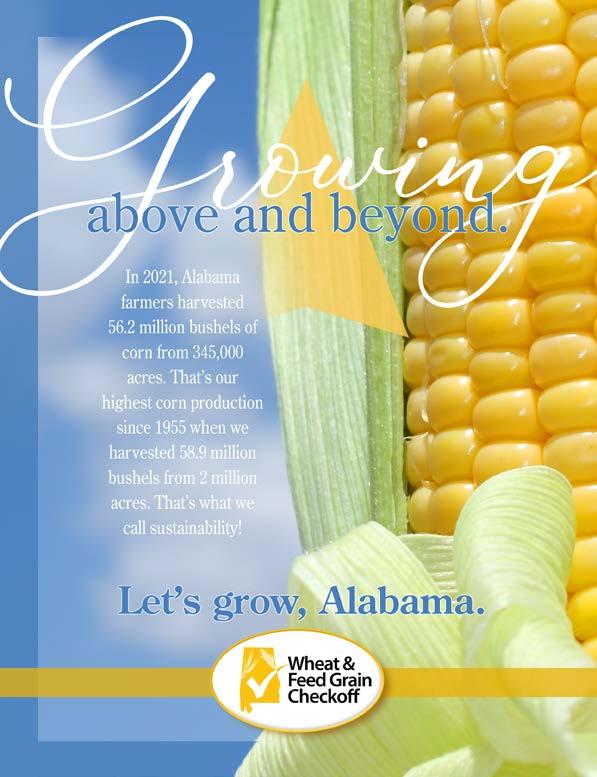

























New and Used Vehicle Loans DRIVING DOWN RATES Save with Farm Bureau Bank® in the passenger seat! Leave high rates in the rearview this year with a vehicle loan from Farm Bureau Bank! Learn about our competitive rates, flexible terms, and protection plans today. Contact your local Alfa Insurance o ce for our current rates and apply today! 1Protection options may vary based on collateral. 2Farm Bureau® Member Rewards Mastercard® credit card offer may be available on the auto loan application. Approval limits based on credit qualifications. Please see Terms and Conditions on farmbureau. bank for additional details about the Farm Bureau Member Rewards Mastercard. Rates and financing are limited to new or used “collateral” 2012 and newer. For our current rates and conditions, visit farmbureau.bank. Non-member rates may be higher than posted rates. All loans are subject to credit approval, verification and collateral evaluation. This offer is not available in all states and rates and terms are subject to change without notice. Farm Bureau, FB, and the FB National Logo are registered service marks owned by, and used by Farm Bureau Bank FSB under license from, the American Farm Bureau Federation. 6.2023 farmbureau.bank • 800.492.3276 Guaranteed Asset Protection1 Credit Card O er with Approved Loan2 Major Mechanical Protection1
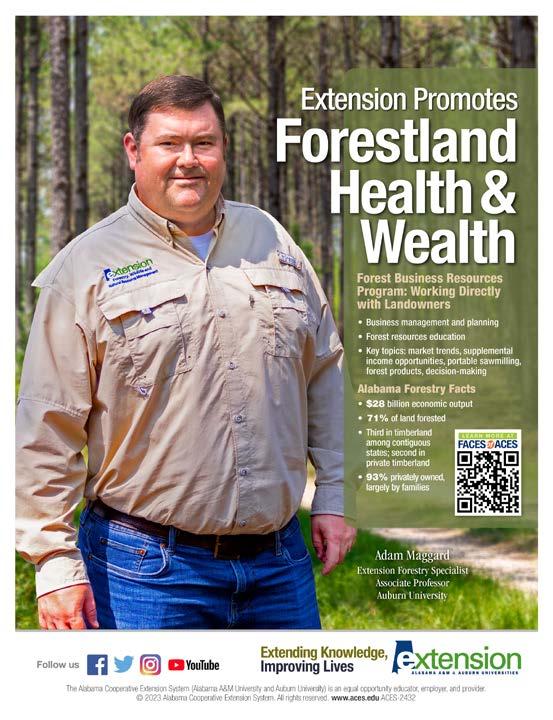




































 By Tanner Hood
By Tanner Hood




























 By Maggie Edwards
By Maggie Edwards






















 By Tanner Hood
By Tanner Hood















 Stacey Little is a foodie, recipe developer and cookbook author whose Southern Bite blog helps families put simple, down-to-earth food on the table while preserving Southern cooking for future generations. See more recipes at southernbite.com.
Stacey Little is a foodie, recipe developer and cookbook author whose Southern Bite blog helps families put simple, down-to-earth food on the table while preserving Southern cooking for future generations. See more recipes at southernbite.com.























